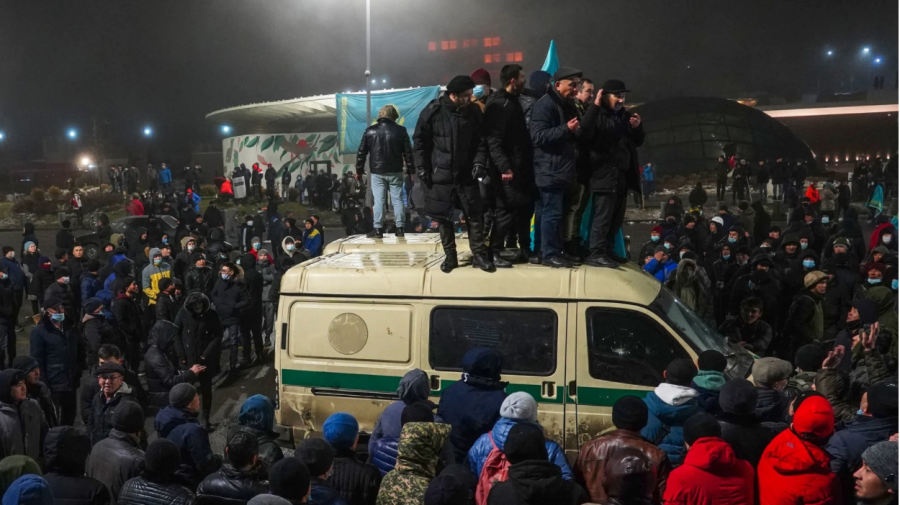Instability in Central Asia: Anxiety among Central Asian governments
Kazakhstan’s protests are over. After a week and a half of turmoil throughout the resource-rich country, the riots that have rocked the country have largely subsided. For those familiar with Central Asia, these protests would seem like a footnote in the long history of Central Asian civil unrest if not for the violent and brutal crackdown from the Kazakh government. While violence is certainly not unheard of in the region, it compels us to wonder exactly why the government response was so harsh.
The demands of the Kazakh people were relatively simple: restore the price of gasoline to 65 tenge per liter (US$0.57 per gallon). The price of gasoline was recently raised to 120 tenge per liter, an increase of 184% in a country where the average wage sits at just US$67 per month. The protests were also fueled by a frustration with the corruption and wealth inequality in the country; 162 Kazakhs hold 55% of the nation’s capital, and the country is in the bottom 10% of the world when it comes to the equality of wealth distribution. Kazakhs, and Central Asians more generally, are growing frustrated with governments that don’t seem to have the best interest of their people in mind.
This wave of protests is not shocking, and protests in Central Asia are not unheard of. There are legitimate reasons for the governments of the area to worry. The same issues that plague Afghanistan do not magically disappear as you cross the border into Uzbekistan, or Tajikistan, or any other nearby Central Asian country. The same forces that allowed the Taliban to gain power (corruption, lawlessness, and jihadist Islam) also exist, albeit at lower levels, in other Central Asian nations. The governments of the region are also historically authoritarian. Seeing the instability of neighboring Afghanistan, it then makes sense that the autocrats of the region would be leery of popular uprisings.
Central Asia is one of the most corrupt regions in the entire world. The five Central Asian states – Kazakhstan, Kyrgyzstan, Tajikistan, Turkmenistan, and Uzbekistan – average a score of 26.6 out of 100 on the 2019 Corruption Perceptions Index, where the global average is 43. There is no functioning democracy in Central Asia. The president of Tajikistan has been in power since 1994. Turkmenistan has been under the control of a cult of personality since 1992. Kazakhstan, Kyrgyzstan, and Uzbekistan have elections, but only in the North Korean sense. All five of these countries suffer corruption-induced wealth inequality to an incredible degree. Nepotism and bribery are staples of many Central Asian businesses and governmental organizations. Meritocracy is a foreign concept to all of these countries – If you know the right people in Central Asia, your access to healthcare, education, and food is guaranteed.
It follows that islamism is on the rise in the region. The recruiters of Hizb ut-Tahrir, ISIS-K, and al-Qaeda have found fertile ground for recruitment. Jihadists are writing social media posts on Whatsapp, Instagram, and Vkontakte in the native languages of Central Asia, and they are certainly finding their intended audience. Some of the most high profile terror attacks of the last decade, like the 2017 New York truck attack, were committed by Central Asian nationals. Young men are joining jihadist groups for many reasons, but the vast majority express a desire to escape poverty and protest against their authoritarian governments.
It is far too early to tell whether or not the response to these protests are indicative of a larger trend among Central Asian governments. Will the fear of their own people lead to more violence and death? Central Asian states are already among the most fragile on the planet, and to survive they must be cautious about how they respond to the will of their people.







